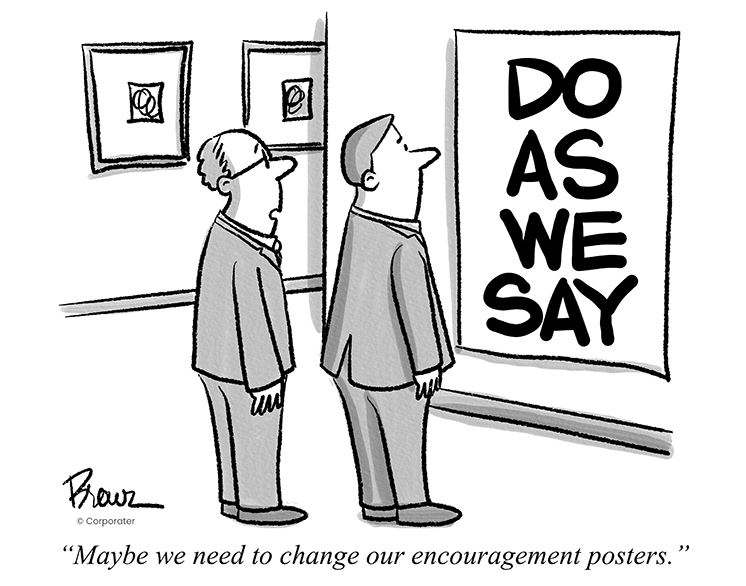
In our work we’re often present at the outset of client change initiatives, whether a new measurement system or software implementation. It’s exciting to be there at the beginning, when both enthusiasm and optimism are running high, and the future looks limitless. But, and here comes that understatement of all time, change is difficult — especially large-scale strategic change. Regardless of the motivation behind the change — perhaps a true burning platform that requires an imminent shift, or an exciting pivot to capture new market space — sustaining the behaviors necessary for true change is a remarkably difficult feat. Sadly, we’ve both witnessed this phenomenon with client firms.
Much has been written about the power of goal setting and altering habits in order to improve our personal and professional lives. However, there is compelling evidence to suggest that maintaining new behaviors is exceedingly difficult. In fact, even when their very life is on the line, people will often revert back to clearly damaging actions. Perhaps a new approach is in order.
If you’re launching a new strategy, or Balanced Scorecard, OKR, or any other initiative and hoping it will dramatically alter your results, rather than relying on the vicissitudes of human nature, consider stacking the deck in your favor by altering the environment. In other words, make it easy for people to change. Here’s a simple yet powerful real-world example. Virtually all school districts and public health officials would like kids to eat more vegetables in school cafeterias. To do so, some schools began experimenting with putting the trays containing veggies at the beginning of the line. Having them as a first option (rather than fries or processed meats) substantially increased the probability of kids filling at least a portion of their plates with vegetables. A simple change in the environment prompted the desired response.
What can you do to enhance the likelihood your teams will engage in desired change? Let’s say you’re launching a new corporate performance management system featuring a Balanced Scorecard or OKR. Your goal is to have people thinking about the vital measures that are most important to executing your strategy. Here are some easy steps that will increase the chance that those measures remain on their radar, and receive the cognitive space they need for people to act on them day in and day out.
- Change your meeting agendas
Make item one a review of your Blanced Scorecard or OKR on every management meeting agenda for the entire year. No exceptions. This sounds obvious, but we’re constantly surprised by how many organizations engage in the heavy lifting of setting up a new measurement system and never go to the trouble of reviewing results. - Log in to the change
When team members turn on their computers in the morning, the first thing they should see is your strategy, strategic measures, and so on. This may appear somewhat Orwellian at first glance, requiring your employees to sit through a corporate message before moving on to their work, but it’s simply a visual cue, a reminder of what’s most important. The goal is to prime people to think about what matters most as they go about their day. - Decorate strategically
Post your strategy, your key measures of success, whatever is driving your change, prominently throughout your office in places they can’t be missed. The key here is to keep it simple, displaying just the vital ingredients of your success.
The more we can remove obstacles that block desired behaviors, the better off we’ll be. Altering your environment and subtly nudging people to adopt the change is an easy and cost-effective way to up the odds of a successful transformation effort.

